Entanglement in Marine Debris
What We Are Doing:
Outreach
Education
Rescues
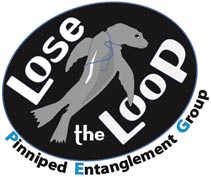
Concerned state and federal biologists at the Alaska Department of Fish & Game and the National Marine Fisheries Service co-founded the Pinniped Entanglement Group, or PEG for short. This group quickly grew to over 50 members include additional biologists, researchers, animal husbandry experts, and educators from throughout the United States and 5 other countries.
Mission statement: To reduce pinniped entanglements in marine debris and fishing gear through education, outreach, and rescue.
Vision statement: A global community dedicated to bringing a permanent end to pinniped entanglements.
The Pinniped Entanglement Group uses a variety of methods to help raise awareness in Alaska and beyond that loops of plastics are harmful to marine mammals.
PRESENTATIONS
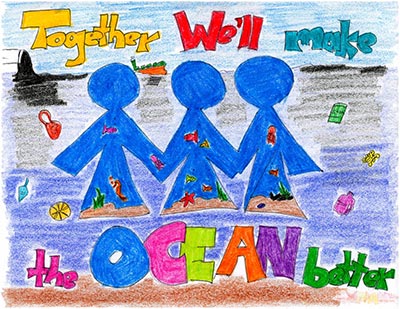
One-Two-Three step program for educators (4–8 grade)
- Watch the NOAA Trash Talk video (15 minutes)
- Play the 4–6 grade ADF&G Power Point Presentation (PowerPoint file 134,487 kB) (25 minutes) or the 7–8 grade ADF&G Power Point Presentation (PowerPoint file 116,329 kB) (22 minutes). These are large files and may take a while to download.
- Do your own part to help keep our oceans free of marine debris!
TELEVISION
We have produced a public service announcement about marine debris which has aired repeatedly on Alaskan television stations, and a more detailed video which has been distributed on the internet (see links below). The PSA was also featured in the September 2013 edition of Alaska Fish & Wildlife News.
- Watch our 30 second public service announcement on entanglement in marine debris
- Watch our full length 10-minute video "Entanglement of Steller Sea Lions in Marine Debris: Identifying Causes and Finding Solutions
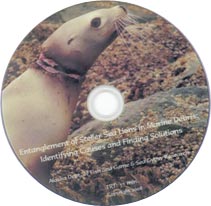
RESCUES
Veterinarians from Canada and the US have developed a concentrated drug cocktail that can be administered to sea lions via dart projector, aka "dart gun", for both land and water based captures. Sedated sea lions can then be approached, disentangled, given reversal drugs, and released without further harm. Our researchers have teamed up with these veterinarians from 2013-2016 to capture and disentangle several male Steller sea lions annually in Southeast Alaska. The first solo attempt by the ADF&G Veterinarian was featured in the July 2013 newsletter and additional attempts by our team and collaborators were featured in the August 2015 newsletter. The "Lose the Loop!" campaign also received attention in the June 2015 newsletter.
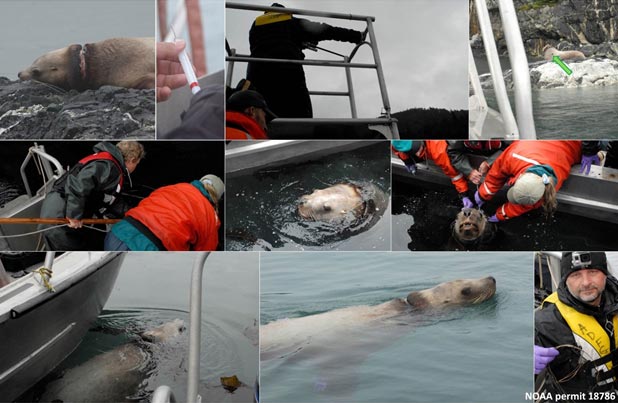

DISPLAYS
Visitors to several popular Alaskan boat harbors will notice our prominent educational displays reminding everyone about the dangers marine debris pose to pinnipeds and how they can be part of the solution when they "Lose the Loop!"

SCIENCE POSTERS & PUBLICATIONS
Pinniped Entanglement Group members published our initial study titled "Entanglement of Steller sea lions (Eumetopias jubatus) in marine debris: Identifying causes and finding solutions" in the scientific journal Marine Pollution Bulletin. We created a follow-up poster presentation for large audiences attending local and global conferences about the marine sciences.
- Read our 2009 poster from the Biennial Conference on Marine Mammals (PDF 151 kB) which introduces the "Lose the Loop!" concept.
- Read our 2015 poster from the Alaska Marine Science Symposium (PDF 1,624 kB) where we discuss recent technological developments that allow us to capture and disentangle free ranging wild animals. (Additional information on these captures can also be found in the Rescues section of our website.)
PRINTED MEDIA
Mariners are reminded when they see our full page ad found in more than 400,000 annual Alaskan tide books.
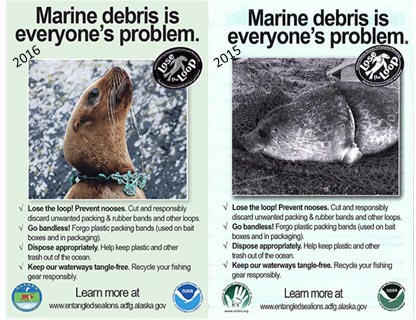
The City and Borough of Anchorage included our "Lose the Loop!" message in several editions of the biannual "Anchorage to Zero Waste" guides which were distributed to over 123,000 households each.
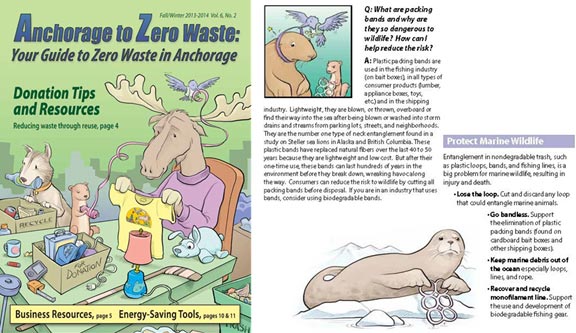
BUMPER STICKERS
We have distributed bumper stickers to Alaskan communities to help raise public awareness of the harm that marine debris causes.


POPULATION SURVEYS
ADF&G researchers document entanglements during the course of our Steller sea lion survey work, and have created an entanglement photo database to catalogue these observations. These data are used in National Marine Fisheries Service technical reports such as "Human-caused injury and mortality of NMFS-managed Alaska marine mammal stocks, 2010–2014."
